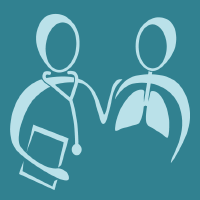Topic Menu
► Topic MenuTopic Editors


2. Anesthesia and Critical Care, San Martino Policlinico Hospital, IRCCS for Oncology and Neurosciences, 16132 Genoa, Italy
Acute Respiratory Distress Syndrome (ARDS): Personalized Therapies and Beyond
Topic Information
Dear Colleagues,
ARDS was first recognized in 1967, and since then, significant strides have been made in the effort to find effective therapies. Nevertheless, despite more than 50 years of research, identifying new effective treatments for the acute respiratory distress syndrome (ARDS) is challenging. Personalized therapy to biological and clinical sub-phenotypes seems promising. Personalized interventions offer the chance to reduce heterogeneity, thus reproposing or newly testing treatments in another perspective. Moreover, ARDS is very heterogeneous syndrome, and understanding the interaction between lungs and other organs could improve our knowledge. The aim of this Special Issue is to publish papers on emerging opportunities for personalizing therapy for ARDS, from the identification of treatable traits to the recognition of target mechanisms, lungs–organs interaction, supportive therapies, new etiologies, and innovative clinical trial designs. Topics of interest include biological phenotypes, omics, physiological phenotypes, clinical phenotypes, ARDS definition, ARDS complications, lung–organs interactions in ARDS, etiology, and microbiota. We look forward to review articles, physiological papers, original research, preclinical experimental studies, meta-analyses, and systematic reviews.
With sadness, we regret to inform you about the passing of Prof. Dr. Paolo Pelosi, Topic Editor of this Topic, in May 2023. We are grateful for his many contributions to the Topic and the legacy his research has left.
Dr. Denise Battaglini
Topic Editor
Keywords
- mechanical ventilation
- supportive therapies
- clinical trials
- personalized medicine
- ARDS
- acute respiratory distress syndrome
- microbiota
- lung–organs crosstalk
Participating Journals
| Journal Name | Impact Factor | CiteScore | Launched Year | First Decision (median) | APC |
|---|---|---|---|---|---|

Advances in Respiratory Medicine
|
1.8 | 2.0 | 1909 | 25.9 Days | CHF 1300 |

Clinics and Practice
|
2.3 | 2.0 | 2011 | 26.4 Days | CHF 1600 |

Diagnostics
|
3.6 | 3.6 | 2011 | 20.7 Days | CHF 2600 |

Journal of Clinical Medicine
|
3.9 | 5.4 | 2012 | 17.9 Days | CHF 2600 |

Journal of Personalized Medicine
|
3.4 | 2.6 | 2011 | 17.8 Days | CHF 2600 |

MDPI Topics is cooperating with Preprints.org and has built a direct connection between MDPI journals and Preprints.org. Authors are encouraged to enjoy the benefits by posting a preprint at Preprints.org prior to publication:
- Immediately share your ideas ahead of publication and establish your research priority;
- Protect your idea from being stolen with this time-stamped preprint article;
- Enhance the exposure and impact of your research;
- Receive feedback from your peers in advance;
- Have it indexed in Web of Science (Preprint Citation Index), Google Scholar, Crossref, SHARE, PrePubMed, Scilit and Europe PMC.

